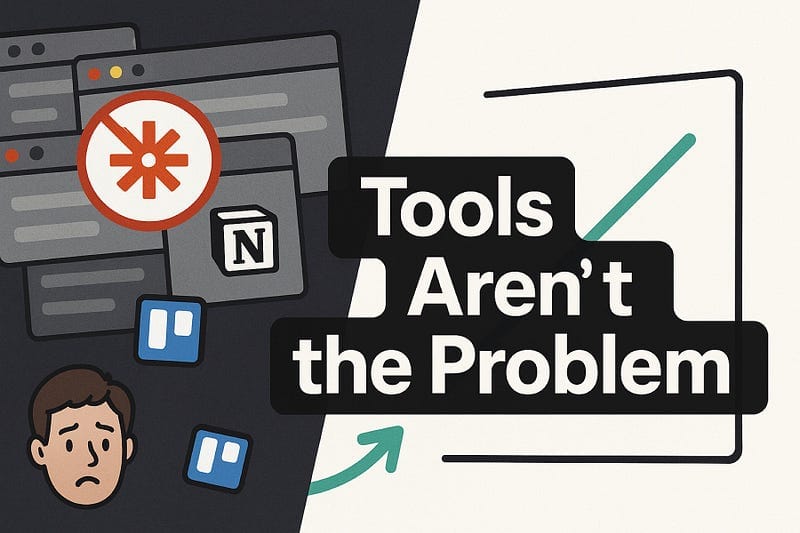The Strategy Is the System
Why You Don’t Need Better Tools – Just Clearer Thinking

You don’t need a better tool.
You just need to admit you haven’t thought clearly enough yet.
That was hard for me to realize. I used to jump from app to app, thinking this one would finally make the system click.
Airtable. Notion. Zapier. Trello. CRM after CRM.
Eventually I figured out something most people learn the hard way:
The tool doesn’t fix the chaos – strategy does.
If your system’s messy, unclear, or not getting results, it’s probably not a tech issue.
It’s a thinking issue.
Once the strategy is clear, the system kind of builds itself. Even if it’s just a Google Sheet and a Post-it note.
Why I Don’t Trust the Tool Obsession Anymore
Here’s how it usually goes:
Someone starts building an online business.
They feel lost. So they start hunting for tools to make things easier.
The logic seems sound. “If I find the right CRM, I’ll stay on top of leads. If I automate this thing, I’ll save hours.”
But what actually happens?
- They don’t know what their offer is.
- They’re unclear who they help.
- They’ve never tested a manual version.
So instead of solving those problems, they bury themselves in setup mode. Tweak a landing page here. Install a new plugin there. Change direction next week.
I’ve done all that. I still catch myself sometimes.
But some of the systems that worked best for me were dead simple:
- A Notion checklist
- A couple Apollo exports
- Some AI-written articles
- A few cold DMs
- One clear offer
No funnels. No email flows. Just clarity and execution.
What Strategy Actually Means (To Me)
When people say “you need a strategy,” it sounds like fluff.
So here’s what I actually mean:
- Outcome: What’s the result I want? (Example: book 5 client calls/week)
- Audience: Who’s most likely to want this result? (Example: solo SaaS founders)
- Message: Why would they care? What’s the hook?
- Path: What’s the simplest way to reach them and prove I can help?
That’s strategy.
If you can answer those four things, you’re already ahead of 90% of people spinning in circles.
Everything else – the automations, the platforms, the tools – they only matter after this part is solid.
What It Looked Like in Real Life
Here’s a real system I built.
No landing page. No automation. No email list.
Just this:
1. Write Medium articles that ranked for niche problems
2. Drop affiliate links inside (Apollo, Notion, etc.)
3. DM people who needed help setting up those tools
4. Offer done-for-you setup or targeted lead lists
That was it.
Nothing fancy. Just clarity on:
- Who I could help
- How I could help
- What I’d say to get their attention
- What would happen next
It worked. Still does. Because it’s lean, repeatable, and doesn’t rely on 50 moving parts.
When Tools Actually Make Sense
I’m not anti-tool. They have their place – once the system’s working.
If I’m already booking calls, sure – Calendly helps.
If I’m closing leads from DMs, yeah, a CRM saves time.
If I’m scaling up, Zapier might be worth the headache.
But tools are multipliers, not saviors. They make something that already works… faster.
They don’t create clarity. You do that manually, usually with a pen and paper.
If You’re Spinning, Strip It Back
Feeling overwhelmed? Here’s a thought experiment:
Imagine you lost all your tools. No software, no automation, no dashboard.
Just a notebook and a phone.
Could you still explain:
- Who you help
- What result you get them
- How you’d reach them
- What happens when they say yes
If not, tools won’t save you.
You’ve got a strategy problem, not a system problem.
Fix that first.
Last Thought
Most people build noisy systems because they’re trying to skip the thinking part.
But the clearer your thinking gets, the simpler your systems become.
You don’t need a better stack. You need a better sentence.





